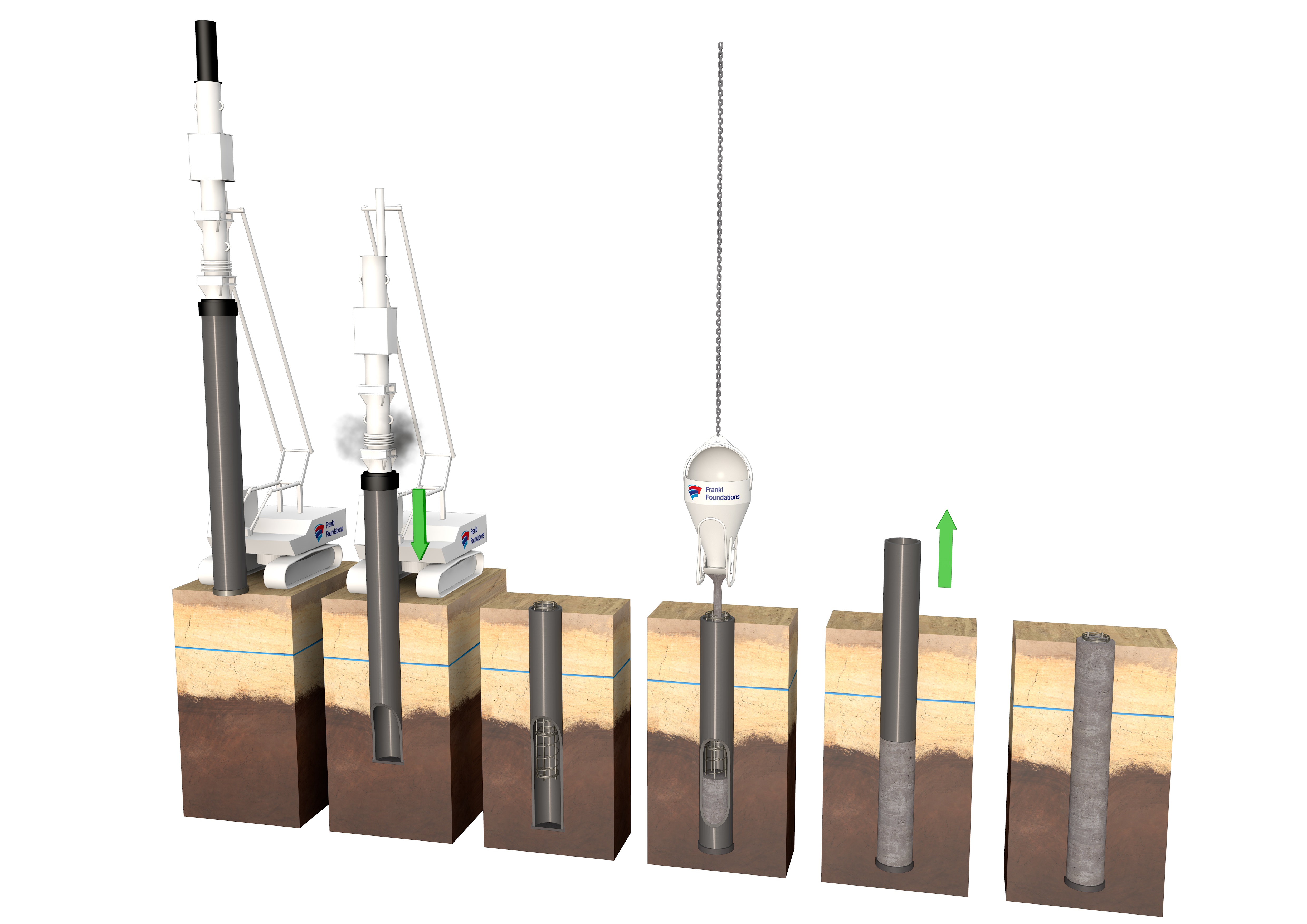1. Implantation of the pile and positioning of the tube sealed with a watertight, lost steel bottom plate
2. Top-driving the temporary steel tube into the soil with a hydraulic or Diesel hammer
3. After reaching the required installation depth, driving is stopped and reinforcement is inserted.
4. Filling of the tube with plastic concrete.
In this chart, concreting is done by means of a concrete transfer bucket ('cufa') fixed on the steel tube. Other means may be used.
5. Withdrawal of the steel tube
6. Finished driven cast-in-place pile.

